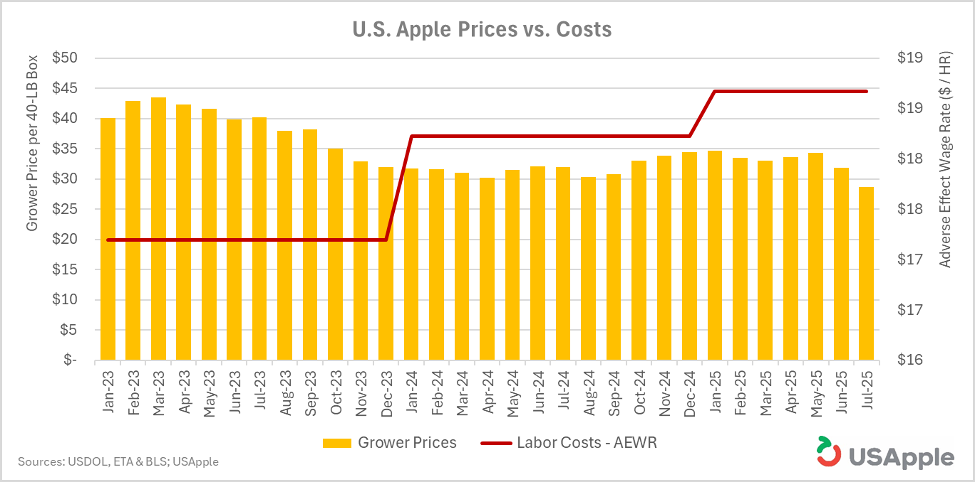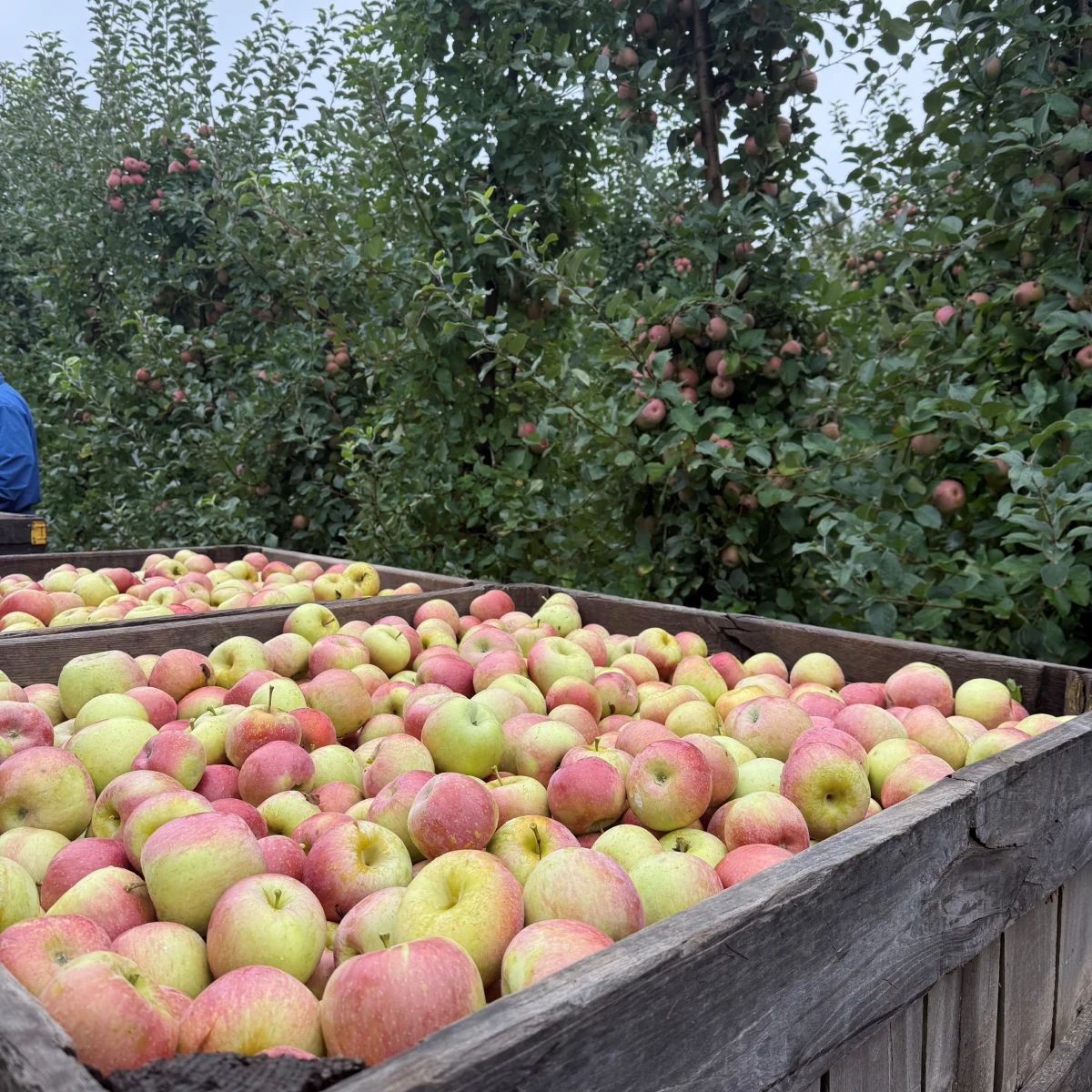Today’s Interim Final Rule published by the Department of Labor (DOL) to revise the methodology for setting Adverse Effect Wage Rates (AEWR) brings long-awaited and much-needed reform to the H-2A wage system.
“In less than three years, grower prices for apples have fallen 28 percent, while labor costs over that time have risen 9 percent, and 60 percent over the last decade,” said Jim Bair, President and CEO of the U.S. Apple Association (USApple). “The economic strain of that picture is seen in the thousands of growers that are just barely hanging onto their farms, many of which have been passed down through generations.”
The proposed H-2A changes reflect many of the reforms USApple has long advocated for, including a more market-based system that discontinues use of the flawed Farm Labor Survey to underpin the AEWR.
“The Administration’s action should help anchor the AEWR to market reality, providing much-needed relief to growers who have seen rising labor costs consume their returns, in many cases pushing them into the red,” said Bair. “We are grateful to the Department of Labor and the Administration for advancing policies that reflect business realities for apple growers.”
The specific impact for apple growers will depend on job classifications and state-by-state wage levels. USApple and its coalition partners are closely reviewing those details.

- Since 2023, grower prices are down by 28% while Labor Costs (AEWR – not including housing, transportation and other administrative fees) are up 9%.
- Average U.S. AEWR is up 57% over the last decade – it’s up 62% in the top seven apple-producing states.
- Labor accounts for around 60% of apple growing costs, but inflation is hitting other inputs as well – nitrogen and phosphate fertilizer costs are up around 20% to 50% over the decade.
###
USApple is the national trade association representing all segments of the apple industry. Members include 36 state and regional apple associations, representing 26,000 apple growers throughout the country and more than 3,700 apple-related companies. Our members collectively grow more than 10 billion pounds of apples a year on average, supporting about 150,000 jobs and generating more than $8 billion in total wages and almost $23 billion in economic activity.








